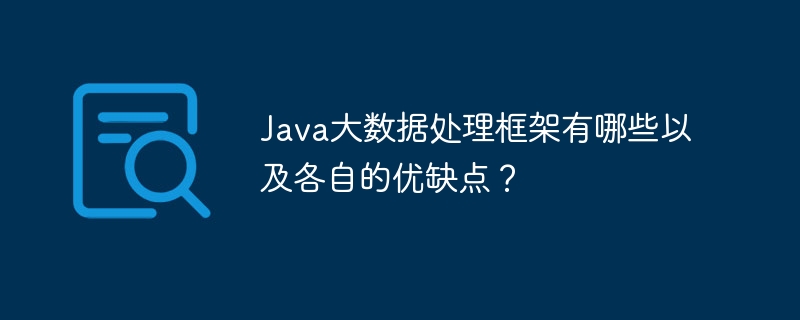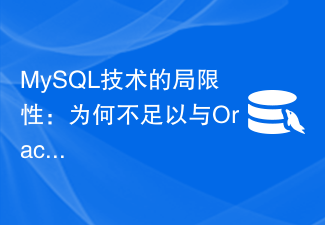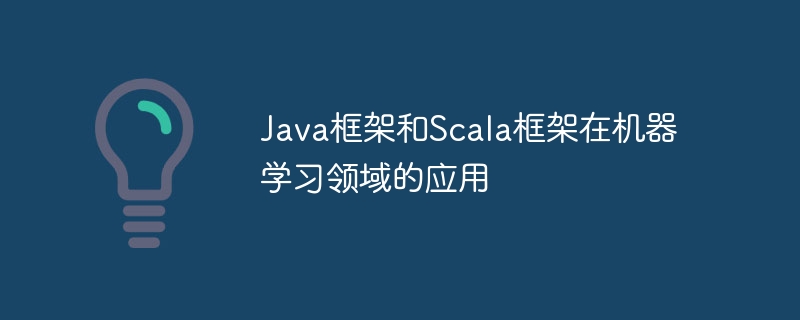When choosing a Java framework, Spring Framework is known for its high scalability, but as complexity increases, maintenance costs also increase. In contrast, Dropwizard is generally lower maintenance but less scalable. Developers should evaluate frameworks based on specific needs.

Comparison of scalability and maintenance costs of Java frameworks
When developing complex systems, choosing the right framework is crucial. Scalability and maintenance costs are key factors in evaluating frameworks. This article will compare two popular Java frameworks: Spring Framework and Dropwizard, and analyze their scalability and maintenance costs in detail.
Spring Framework
Spring Framework is known for its high extensibility. Its modular design allows developers to easily add and replace components to create highly customized applications. Spring provides a wide range of extension points, such as BeanFactoryPostProcessor and BeanPostProcessor, enabling developers to inject custom logic during the framework's lifecycle.
However, Spring’s scalability also brings high maintenance costs. As the complexity of your application increases, managing and maintaining the configuration and dependencies required by your Spring application can become tedious. Developers need to have a deep understanding of Spring's internals to scale effectively.
Practical case:
Consider an e-commerce application developed using Spring Framework. As your business grows, new features need to be added, such as supporting multiple languages. This can be achieved by creating a custom BeanFactoryPostProcessor to inject multi-language configuration into a Spring application. This approach allows for easy scalability but can result in increased maintenance overhead without proper planning and testing.
Dropwizard
Dropwizard is a lightweight Java framework focused on rapid development of RESTful web services. Dropwizard has higher maintenance costs compared to Spring. Its immutable design and limited support for dependency injection make scaling more challenging.
However, Dropwizard is generally less expensive to maintain. Its clean API and simple configuration reduce the complexity required for configuration and dependency management. Dropwizard also provides out-of-the-box monitoring and diagnostic tools, further simplifying maintenance.
Practical case:
Consider using an API service built with Dropwizard. Due to Dropwizard's immutable design, extending the API to add new functionality may require significant refactoring. However, maintenance costs can still be kept low due to the simplicity of the framework and maintenance tools.
Conclusion:
Both Spring Framework and Dropwizard offer different scalability versus maintenance cost trade-offs. Spring offers a high degree of scalability, but maintenance costs increase with application complexity. Dropwizard is less scalable but generally less expensive to maintain. Developers should carefully evaluate each framework based on their specific needs.
The above is the detailed content of How do the scalability and maintenance costs of Java frameworks compare?. For more information, please follow other related articles on the PHP Chinese website!
 MySQL和Oracle:对于垂直和水平扩展的灵活性对比Jul 12, 2023 pm 02:54 PM
MySQL和Oracle:对于垂直和水平扩展的灵活性对比Jul 12, 2023 pm 02:54 PMMySQL和Oracle:对于垂直和水平扩展的灵活性对比在当今大数据时代,数据库的扩展性成为一个至关重要的考虑因素。扩展性可以分为垂直扩展和水平扩展两个方面。在本文中,将重点比较MySQL和Oracle这两种常见的关系型数据库在垂直和水平扩展方面的灵活性。垂直扩展垂直扩展是通过增加服务器的处理能力来提高数据库的性能。这可以通过增加更多的CPU核心、扩大内存容
 Java框架的扩展性和维护成本如何对比?May 31, 2024 am 09:25 AM
Java框架的扩展性和维护成本如何对比?May 31, 2024 am 09:25 AM在选择Java框架时,SpringFramework以其高扩展性见长,但随复杂度提升,维护成本也随之增加。相反,Dropwizard维护成本通常较低,但扩展能力较弱。开发者应根据特定需求评估框架。
 Java大数据处理框架有哪些以及各自的优缺点?Apr 19, 2024 pm 03:48 PM
Java大数据处理框架有哪些以及各自的优缺点?Apr 19, 2024 pm 03:48 PM对于大数据处理,Java框架包括ApacheHadoop、Spark、Flink、Storm和HBase。Hadoop适用于批处理,但实时性较差;Spark性能高,适合迭代处理;Flink实时处理流式数据;Storm流式处理容错性好,但难以处理状态;HBase是NoSQL数据库,适用于随机读写。具体选择取决于数据需求和应用程序特性。
 JPA还是MyBatis:选择合适的ORM工具的准则Feb 22, 2024 pm 09:57 PM
JPA还是MyBatis:选择合适的ORM工具的准则Feb 22, 2024 pm 09:57 PMJPA还是MyBatis:选择合适的ORM工具的准则,需要具体代码示例引言:在现代软件开发中,使用ORM(对象关系映射)工具是非常常见的。ORM工具能够将关系型数据库中的表与对象模型间进行映射,大大简化了开发过程。然而,在选择使用哪个ORM工具时,很多开发者常常感到困惑。本文将讨论如何选择适合的ORM工具,重点比较JPA和MyBatis,并给出具体的代码示例
 PHP 设计模式:实现代码复用和扩展性的关键Feb 21, 2024 pm 01:22 PM
PHP 设计模式:实现代码复用和扩展性的关键Feb 21, 2024 pm 01:22 PM在现代软件开发中,创建可扩展、可维护的应用程序至关重要。PHP设计模式提供了一组经过验证的最佳实践,可帮助开发人员实现代码复用和提高扩展性,从而降低复杂性和开发时间。什么是PHP设计模式?设计模式是可重用的编程解决方案,可解决常见的软件设计问题。它们提供统一和通用的方法来组织和结构代码,从而促进代码复用、可扩展性和维护性。SOLID原则php设计模式遵循SOLID原则:S(单一职责):每个类或函数都应负责单一职责。O(开放-封闭):类应针对扩展开放,但针对修改封闭。L(Liskov替换):子类应
 MySQL技术的局限性:为何不足以与Oracle匹敌?Sep 08, 2023 pm 04:01 PM
MySQL技术的局限性:为何不足以与Oracle匹敌?Sep 08, 2023 pm 04:01 PMMySQL技术的局限性:为何不足以与Oracle匹敌?引言:MySQL和Oracle是当今世界最流行的关系数据库管理系统(RDBMS)之一。虽然MySQL在Web应用开发和小型企业中非常流行,但在大型企业和复杂数据处理领域,Oracle却一直占据主导地位。本文将探讨MySQL技术的局限性,解释为何其不足以与Oracle匹敌。一、性能和扩展性限制:MySQL在
 深入了解Java框架技术栈:探索Spring MVC、Hibernate、MyBatis等常用Java框架Dec 26, 2023 pm 12:50 PM
深入了解Java框架技术栈:探索Spring MVC、Hibernate、MyBatis等常用Java框架Dec 26, 2023 pm 12:50 PMJava框架技术栈:介绍常用的Java框架,如SpringMVC、Hibernate、MyBatis等随着Java的不断发展,越来越多的框架被开发出来以简化开发过程。其中,SpringMVC、Hibernate、MyBatis等是Java开发中最常用的框架之一。本文将介绍这些框架的基本概念和使用方法,帮助读者更好地理解和应用这些框架。第一,我们来介绍Sp
 Java框架和Scala框架在机器学习领域的应用May 31, 2024 pm 12:43 PM
Java框架和Scala框架在机器学习领域的应用May 31, 2024 pm 12:43 PMJava和Scala语言在机器学习中广泛使用。本文介绍了以下Java和Scala框架:Java:Weka(提供机器学习算法和工具)、H2O(分布式内存内机器学习平台)Scala:SparkMLlib(分布式计算库的一部分,提供机器学习算法)、MLpipe(端到端管道库)这些框架可简化机器学习模型构建、提高训练效率、实现可扩展性和生产部署。选择合适的框架取决于项目需求和应用程序的规模和复杂性。


Hot AI Tools

Undresser.AI Undress
AI-powered app for creating realistic nude photos

AI Clothes Remover
Online AI tool for removing clothes from photos.

Undress AI Tool
Undress images for free

Clothoff.io
AI clothes remover

AI Hentai Generator
Generate AI Hentai for free.

Hot Article

Hot Tools

Dreamweaver Mac version
Visual web development tools

MantisBT
Mantis is an easy-to-deploy web-based defect tracking tool designed to aid in product defect tracking. It requires PHP, MySQL and a web server. Check out our demo and hosting services.

Notepad++7.3.1
Easy-to-use and free code editor

SAP NetWeaver Server Adapter for Eclipse
Integrate Eclipse with SAP NetWeaver application server.

SublimeText3 Mac version
God-level code editing software (SublimeText3)






